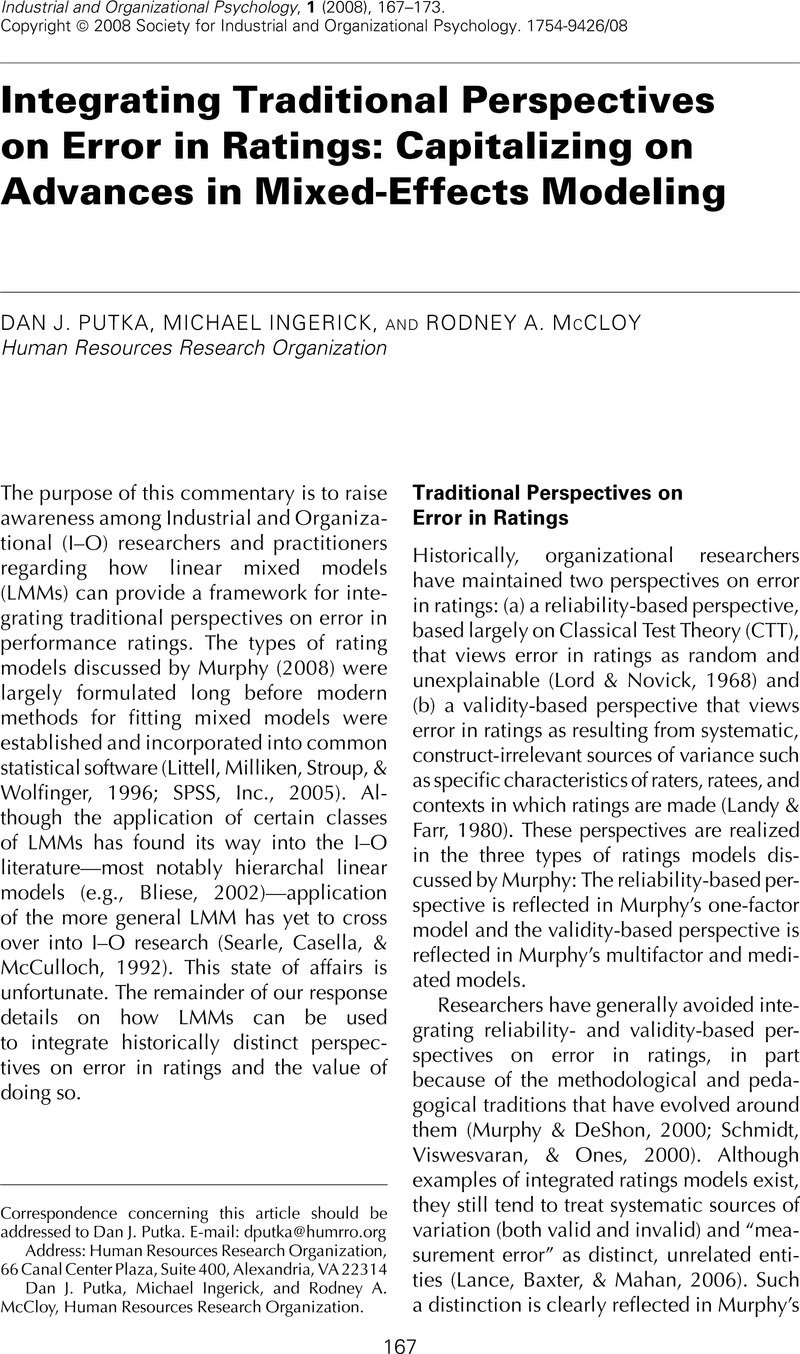Crossref Citations
This article has been cited by the following publications. This list is generated based on data provided by Crossref.
Murphy, Kevin R.
2008.
Perspectives on the Relationship Between Job Performance and Ratings of Job Performance.
Industrial and Organizational Psychology,
Vol. 1,
Issue. 2,
p.
197.
Putka, Dan J.
Lance, Charles E.
Le, Huy
and
McCloy, Rodney A.
2011.
A Cautionary Note on Modeling Multitrait-Multirater Data Arising From Ill-Structured Measurement Designs.
Organizational Research Methods,
Vol. 14,
Issue. 3,
p.
503.
Bono, Joyce E.
Hooper, Amy C.
and
Yoon, David J.
2012.
Impact of rater personality on transformational and transactional leadership ratings.
The Leadership Quarterly,
Vol. 23,
Issue. 1,
p.
132.
O’Neill, Thomas A.
Goffin, Richard D.
and
Gellatly, Ian R.
2012.
The Use of Random Coefficient Modeling for Understanding and Predicting Job Performance Ratings.
Organizational Research Methods,
Vol. 15,
Issue. 3,
p.
436.
O’Neill, Thomas A.
McLarnon, Matthew J. W.
and
Carswell, Julie J.
2015.
Variance Components of Job Performance Ratings.
Human Performance,
Vol. 28,
Issue. 1,
p.
66.
Ellington, J. Kemp
and
Wilson, Mark A.
2017.
The Performance Appraisal Milieu: A Multilevel Analysis of Context Effects in Performance Ratings.
Journal of Business and Psychology,
Vol. 32,
Issue. 1,
p.
87.



